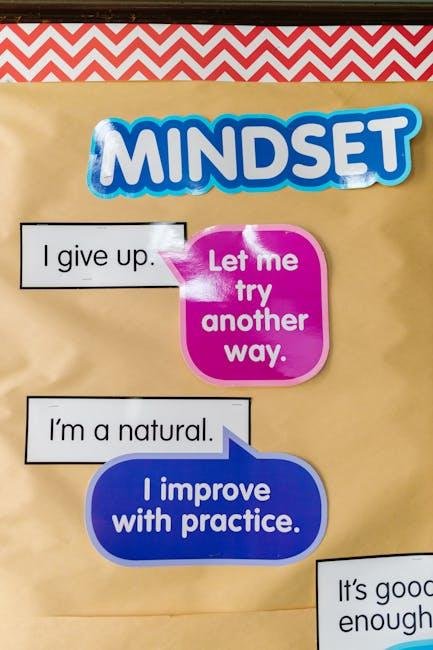In an age where information is at our fingertips, the art of memorization often takes a backseat to the practise of connection. “Memorize Less, Connect more” is a clarion call for a new paradigm in learning and dialog—one that prioritizes the depth of our interactions over the breadth of our knowledge. As we navigate an ever-evolving landscape of ideas, opinions, and facts, the challenge is not simply to retain information but to engage meaningfully with others. This article delves into how fostering authentic connections can transform our understanding and retention of information, encouraging a more enriching and vibrant exchange of thoughts. Join us as we explore the intersection of memory, relationships, and the power of shared experiences, illuminating a path where meaningful dialogue takes center stage.
Embracing a Mindset Shift Toward Meaningful Understanding
In an age saturated with information, the focus on rote memorization often overshadows the importance of connecting ideas in meaningful ways. Achieving a deeper understanding requires a shift in how we approach learning. Instead of filling our minds with isolated facts, we can nurture curiosity and foster a love for exploration. This involves engaging with the material through various methods, such as:
- Asking questions that challenge existing knowledge.
- Creating visual maps that link concepts together.
- Discussing ideas with others to gain diverse perspectives.
Adopting this mindset encourages a richer learning experiance and promotes retention that comes naturally from contextual understanding rather than mechanical memorization. The more we connect concepts, the better equipped we are to apply them in real-world situations. Furthermore, integrating practices such as collaborative learning can enhance this process. A glimpse into the advantages includes:
| Advantage | Benefit |
|---|---|
| Increased Engagement | Participants are more invested in their learning. |
| Enhanced Critical Thinking | Fosters analytical skills through discussion. |
| Stronger Retention | Connections led to lasting memory effects. |

Cultivating Connections Through Collaborative Learning
The art of learning is evolving, and one of the most powerful shifts we can embrace is the move from individual memorization to building robust connections through shared experiences. In collaborative learning environments, participants engage with one another, exchanging ideas, skills, and perspectives. This dynamic interaction not only deepens understanding but fosters a sense of community. Through working together, learners can leverage diverse viewpoints, allowing for richer discussions and more comprehensive insights. Here’s how collaborative learning creates meaningful connections:
- Shared Knowledge: Everyone brings unique expertise to the table, enriching the learning experience for all.
- Active Participation: Collaboration encourages active engagement, prompting individuals to articulate thoughts and questions.
- Enhanced Problem Solving: teams can brainstorm solutions more effectively, drawing from a wider pool of ideas.
The benefits of these interconnected learning experiences can be further understood through the following table that highlights key aspects of collaborative learning:
| Aspect | Benefit |
|---|---|
| Communication | Fosters clarity and understanding among peers. |
| Support | Creates a safe space for risk-taking and innovation. |
| Network Building | Develops lasting professional relationships. |
When we embrace collaborative learning, we shift our focus from mere memorization to meaningful interactions that stimulate growth. This approach not only enhances knowledge acquisition but also prepares individuals to navigate complex social landscapes effectively. Connecting with others in the learning process enriches our experiences, forging bonds that extend beyond the classroom into broader communities.

harnessing Technology to Enhance Retention without Rote
In the evolving landscape of education, technology offers innovative tools that can transform the way we engage with information. By moving beyond conventional memorization,educators can leverage digital platforms to foster deeper connections with the material. Incorporating multimedia resources, such as videos, podcasts, and interactive simulations, helps to generate a more enriching learning experience. These tools not only capture attention but also encourage critical thinking and collaboration among learners.
Using technology to enhance retention prioritizes understanding over memorization. Strategies such as spaced repetition, gamification, and interactive assessments engage students in ways that traditional methods cannot. Here are some key approaches to consider:
- Spaced Repetition: Information is revisited at strategically planned intervals to reinforce memory.
- Gamification: Introducing game-like elements can motivate and inspire learners to engage more actively.
- Collaborative Learning: Tools like discussion boards and group projects promote teamwork and knowledge exchange.
| Method | Description | Benefits |
|---|---|---|
| Spaced Repetition | Review material at spaced intervals | Improves long-term retention |
| Gamification | Integrate game mechanics into learning | Increases engagement and motivation |
| Collaborative Learning | Group work using digital platforms | Enhances communication skills |

Strategies for Building a Framework of Lasting Relationships in Knowledge Sharing
Building a robust framework for relationships in knowledge sharing requires intentional and meaningful engagement. One effective method is to prioritize open communication, fostering an environment where sharing insights and seeking help is encouraged. This can be done through regular virtual meetups or informal gatherings that allow individuals to express their ideas without restraint. Additionally, utilizing tools like forums and collaboration platforms can help bridge the gap between team members, ensuring consistent and smooth transmission of knowledge. It’s essential to encourage storytelling as a technique for sharing experiences, as narratives can resonate more deeply than facts alone, creating a personal connection that enhances understanding.
Along with communication, cultivating a culture of trust and respect is foundational to lasting relationships.This can be achieved through recognition of contributions,where individuals feel valued for their input and knowledge. Establishing mentorship programs allows seasoned experts to guide newcomers, creating bonds based on shared goals and aspirations. Furthermore, hosting workshops or brainstorming sessions can not only stimulate creativity but also strengthen team dynamics. consider implementing regular feedback loops to assess the effectiveness of knowledge sharing efforts; this can definitely help refine practices and address any issues promptly,ensuring that the framework remains strong and adaptive to changing needs.
To Wrap It Up
In a world overflowing with information, the pressure to memorize has never been greater. Yet, as we finish this exploration of “Memorize Less, Connect More,” it becomes clear that true understanding transcends rote learning. By prioritizing connections over facts, we unlock the potential for deeper insights and more meaningful relationships. Embracing this paradigm shift not only enriches our own experiences but also fosters a collective growth within our communities. As we step away from the confines of memorization, let us instead engage with the world around us—listening, sharing, and building bridges that lead to collaboration and creativity. Ultimately, the most valuable knowledge lies not in what we remember, but in how we connect with one another.So, let’s embark on this journey together, inviting curiosity and connection to guide us as we navigate the vast sea of ideas and experiences that await.

